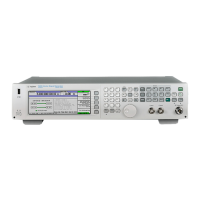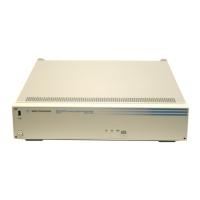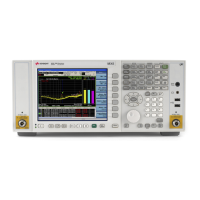50 Agilent N5181A/82A MXG Signal Generators User’s Guide
Optimizing Performance
Using an Output Offset, Reference, or Multiplier
Setting an Output Reference
Using an output reference, the signal generator can output a frequency or amplitude that is offset
(positive or negative) by the entered value from a chosen reference value.
RF Output = reference value + entered value
To set a reference:
1. Set the frequency or amplitude to the value you want as the output reference level.
2. Frequency: Press Frequency > Freq Ref Set
The frequency displays 0.00 Hz, indicating that this is the RF output frequency “zero level.”
All frequencies entered are interpreted as being relative to this reference frequency.
Amplitude: Press Amptd > More > Amptd Ref Set
The amplitude displays 0.00 dB, indicating that this is the RF output amplitude “zero level.”
All amplitudes entered are interpreted as being relative to this reference amplitude.
Examples
To set a new frequency or amplitude reference, turn the frequency reference off, and then follow the
steps above.
Parameter
Example
#1
Example
#2
Example
#3
Comments
Reference: 50 MHz 50 MHz 2 GHz A reference value must be positive.
Entered (and displayed) Value: 2 MHz −2 MHz −1 GHz The entered value can be positive or negative.
Output Frequency: 52 MHz 48 MHz 1 GHz
The signal generator alerts you if the output frequency or
amplitude is out of range.
Indicates that a reference is on

